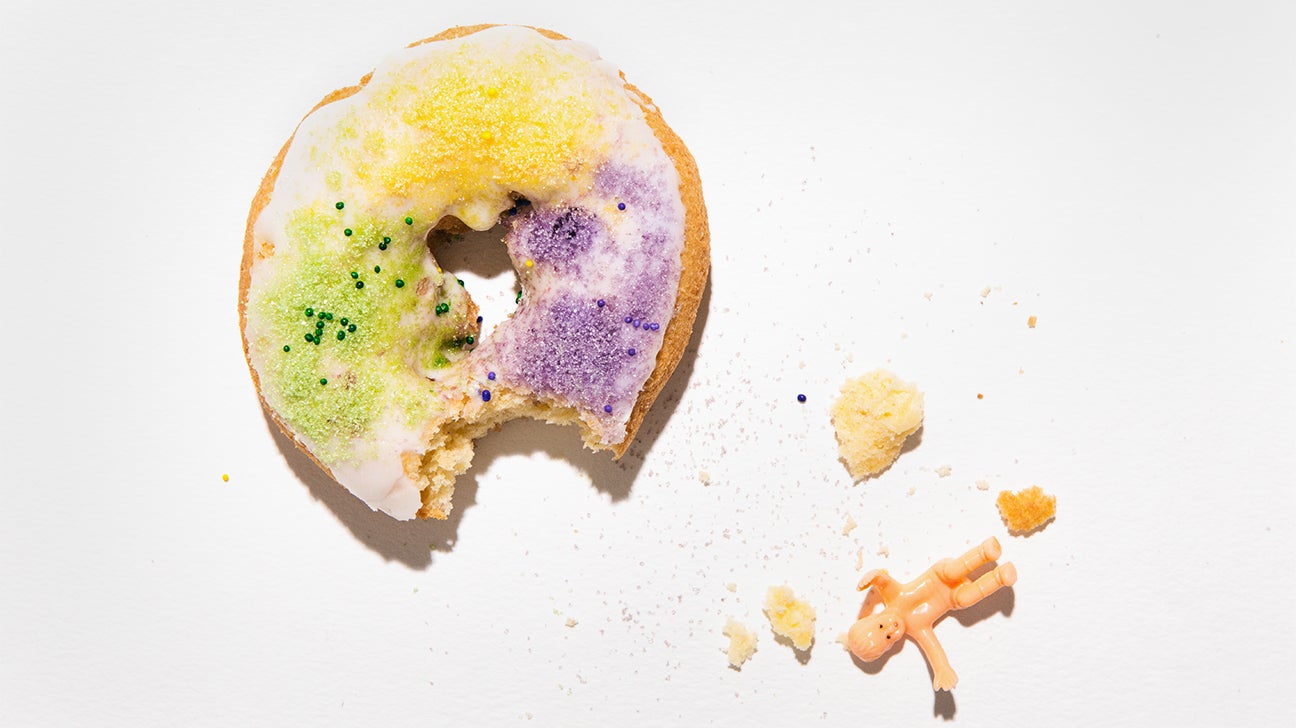Quitting sugar has real side effects, with symptoms ranging from headaches to depression (rude!). The good news? Your body is an efficient machine and side effects won’t last forever.
If you’re considering (or in the middle of) a sugar break, here’s everything you need to know about detox symptoms, how to manage the discomfort, and how to cut back on the sweet stuff.
Symptoms of lowered sugar intake (sugar detox side effects)
Depending on how your body reacts to sugar, and the amount that you regularly consume, symptoms may include:
- tiredness
- irritability and changes in mood
- increased depression
- increased anxiety
- intense sugar cravings
- intense carb cravings
The first day of reduced sugar might go by without much fanfare. After that, the sugar withdrawal side effects don’t take long to kick in.
Sugar is not classified as a drug, but in some ways (habit-formation and withdrawal symptoms), it acts like one. For example, it causes the release of dopamine, which makes you feel good. Think a runner’s high but with cinnamon rolls and chocolate instead.
The body can also build a tolerance to sugar, similar to alcohol and caffeine. When you reduce sugar intake, your body misses that feel-good dopamine. Cravings soon take over, and before you know it, you’re sitting in your closet bingeing on a “secret” cupcake.
In both animals and humans, sugar withdrawals affect brain chemistry contributing to a wide range of physical and mental symptoms.
The amount of sugar you consume will also determine how long the symptoms last, with anywhere from a few days to a few weeks falling in the normal range.

Tips for reducing sugar detox symptoms
Withdrawal symptoms might make you think twice about reducing your sugar intake, but research shows there are lots of health benefits waiting on the other side. And don’t worry — you don’t need to eliminate all sugar to feel the benefits. Bodies need sugar, after all — just in appropriate amounts.
Here are a few tips that can help:
- Observe where you’re getting sugar from your diet. Pay attention to nutrition labels and portion sizes. Once you know how much sugar you’re consuming, and where it’s coming from, you can tweak your diet accordingly.
- Fill up at breakfast. Pass on the frosted and colorful cereals for protein and fiber. Fiber and protein leave you feeling full for longer and can reduce sugar cravings throughout the day.
- Look for “added sugars” on food labels. Food labels include “added” sugars, separating the sugar added during the manufacturing process from those naturally occurring in the food. The FDA recommends limiting added sugars to 10 percent of your daily calories. (See, isn’t that better than no sugar at all?)
- Learn your sugar triggers. Many people have food triggers that increase their sugar cravings. Stress is a biggie. Many people rely on sugar’s dopamine reward to help them feel better when under chronic stress. Know your triggers and develop a plan. It could be keeping a nutrient-dense snack on hand or taking a walk when you feel like housing sugar.
- Be wary of artificial sweeteners. Aspartame, saccharin, and sucralose are only a few of the artificial sweeteners used to add sweetness without calories. But a research review showed that these sweeteners can contribute to weight gain by influencing gut bacteria and the metabolic process.
Remember — you don’t have to give up all sugar to live healthier and feel better. It’s about moderation and staying at lower daily sugar levels most (not all) of the time.
tl;dr
- Sugar reduction can affect the body with cravings and withdrawal symptoms.
- Sugar detox symptoms range from headaches and muscle aches to increased depression and anxiety.
- Balancing natural and added sugars is the best way to manage sugar intake. Added sugars should ideally be kept at less than 10 percent of your total calories.
- Specific behaviors or conditions like chronic stress can trigger sugar cravings.
- Staying hydrated, eating more protein and fiber, and watching your added sugar consumption can reduce the effects of sugar withdrawal as you eat a nutritious diet.


0 Commentaires